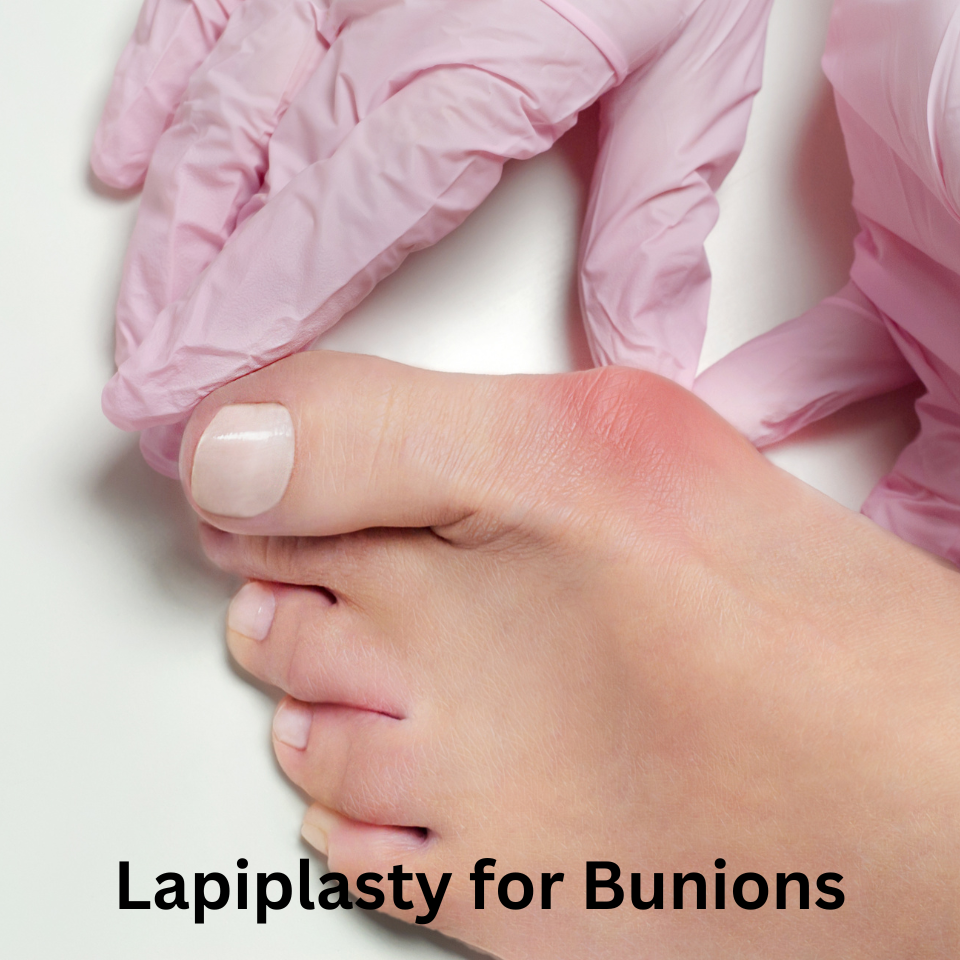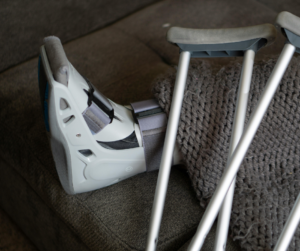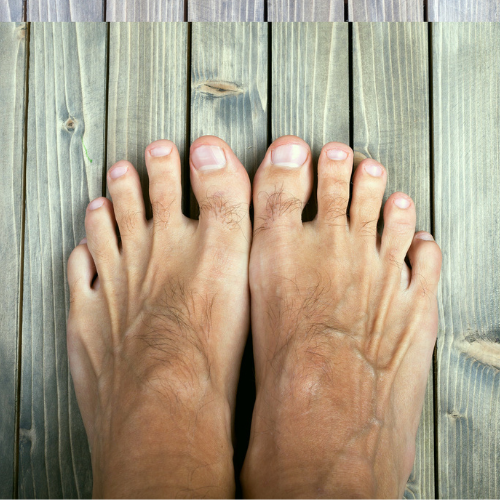Bunions are a common foot problem that many people experience at some point in their lives. While some individuals manage bunions with non-surgical methods, others may find that surgery is the best option to alleviate pain and restore normal foot function. One of the leading surgical techniques for bunion correction today is the Lapiplasty procedure. This innovative approach offers a more comprehensive and effective solution than traditional bunion surgeries.
Bunions are quite common, with studies showing that about 23% of people between the ages of 18 and 65 and 36% of those over 65 have bunions to some degree. However, not all bunions require surgery. In many cases, conservative treatments such as wearing wider shoes, using toe spacers or bunion splints, and custom orthotics can help alleviate symptoms and prevent the bunion from worsening. Surgery typically becomes necessary when these conservative measures fail to relieve pain, and the bunion continues to interfere with daily activities.
can help alleviate symptoms and prevent the bunion from worsening. Surgery typically becomes necessary when these conservative measures fail to relieve pain, and the bunion continues to interfere with daily activities.
Deciding on Bunion Surgery
If non-surgical treatments are no longer effective, it might be time to consider surgical correction. The decision to undergo bunion surgery is influenced by several factors, including:
- Bunion Size: The size of the bunion, which can be assessed through weight-bearing X-rays, is an important consideration.
- Degree of Misalignment: The extent to which the big toe deviates from its normal position.
- Additional Foot Conditions: The presence of other conditions, such as osteoarthritis, that may be related to the bunion.
- Foot Stability: The overall stability of the foot, including any signs of hypermobility, or excessive looseness, in the affected joint.
Your surgeon will evaluate these factors to determine whether surgery is the best option for you and, if so, which surgical method would be most appropriate. One increasingly recommended option is the Lapiplasty procedure.
The Lapiplasty Procedure: A New Era in Bunion Correction
The Lapiplasty procedure represents a significant advancement in bunion surgery. Although it is based on the principles of an older technique known as the Lapidus procedure, it incorporates modern technology and methods to achieve better and more consistent outcomes.
The Lapidus procedure, first introduced in the 1930s, involves fusing the first tarsometatarsal joint located on the inside of the foot. This fusion stabilizes the joint and helps correct the misalignment that leads to bunion formation. The Lapiplasty procedure builds on this concept but adds new elements that make the correction more reliable and comprehensive.
The name “Lapiplasty” is a combination of “Lapidus” and “plasty,” which means to mold, graft, or shape. This name reflects the procedure’s goal of not only correcting the bunion deformity but also ensuring that the correction is precise and long-lasting.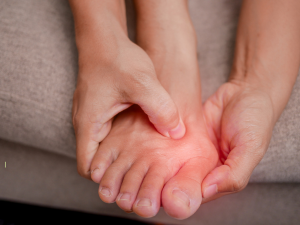
When Is the Lapiplasty Procedure Recommended?
The Lapiplasty procedure is not the best choice for every bunion case, but it is particularly effective for patients with certain characteristics:
- Moderate to Severe Bunion: The procedure is typically recommended for bunions that are more pronounced and visible on weight-bearing X-rays.
- Rotational Misalignment: Patients with a noticeable twist or rotation of the first metatarsal bone, which contributes to the bunion deformity, are ideal candidates.
- Hypermobility: The procedure is also suitable for patients with a “loose” foot, where there is excessive movement or instability in the affected joint.

Who Is a Good Candidate for the Lapiplasty Procedure?
The Lapiplasty procedure is particularly beneficial for patients who exhibit certain characteristics:
- Moderate to Severe Bunions: This procedure is ideal for patients with more pronounced bunions that are visible on weight-bearing X-rays.
- Rotational Misalignment: Patients with a twist or rotational misalignment of the first metatarsal bone are excellent candidates for the Lapiplasty procedure.
- Foot Hypermobility: Individuals with a “loose” or hypermobile foot, where there is excessive movement in the affected joint, can benefit from the added stability that Lapiplasty provides.
The Surgical Experience: What to Expect
The Lapiplasty procedure is usually performed as an outpatient surgery, meaning patients can go home the same day. The surgery is done under a combination of monitored anesthesia care (also known as twilight sedation) and local anesthesia, which numbs the foot.
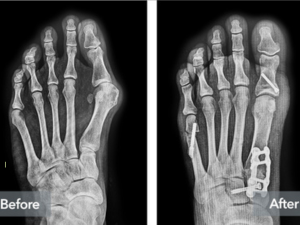
Benefits of the Lapiplasty Procedure
One of the main advantages of the Lapiplasty procedure is its ability to provide consistent, reliable results. The standardized approach and specialized instrumentation used in the procedure significantly reduce the risk of bunion recurrence, which has been a common issue with traditional bunion surgeries.
Patients who undergo the Lapiplasty procedure often report high levels of satisfaction with their outcomes. The procedure not only addresses the cosmetic concerns associated with bunions but also alleviates the pain and discomfort that can interfere with daily life.
Consult with Dr. Rappette of Foot & Ankle Centers to determine if you are a suitable candidate for this treatment.
Call (815) 942-9050 or (630) 553-9300 to schedule your consultation today. Foot & Ankle Centers has locations in Morris and Yorkville, IL.

